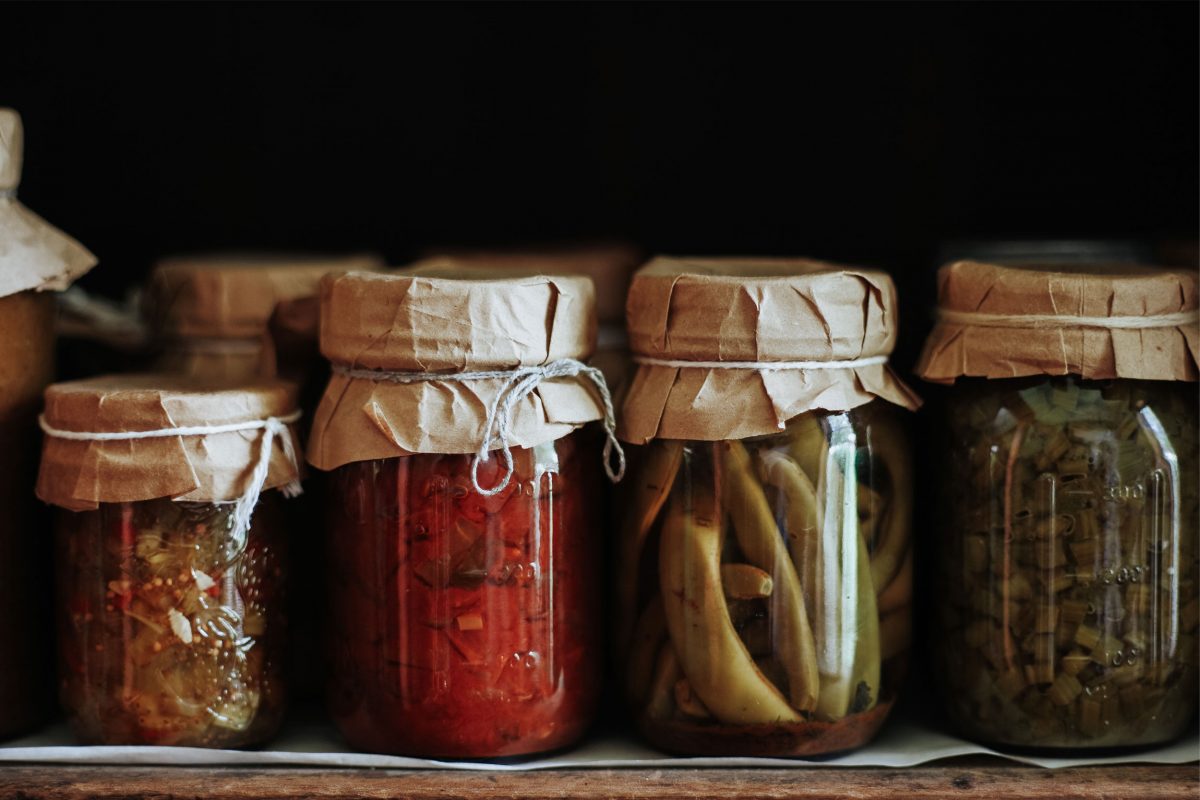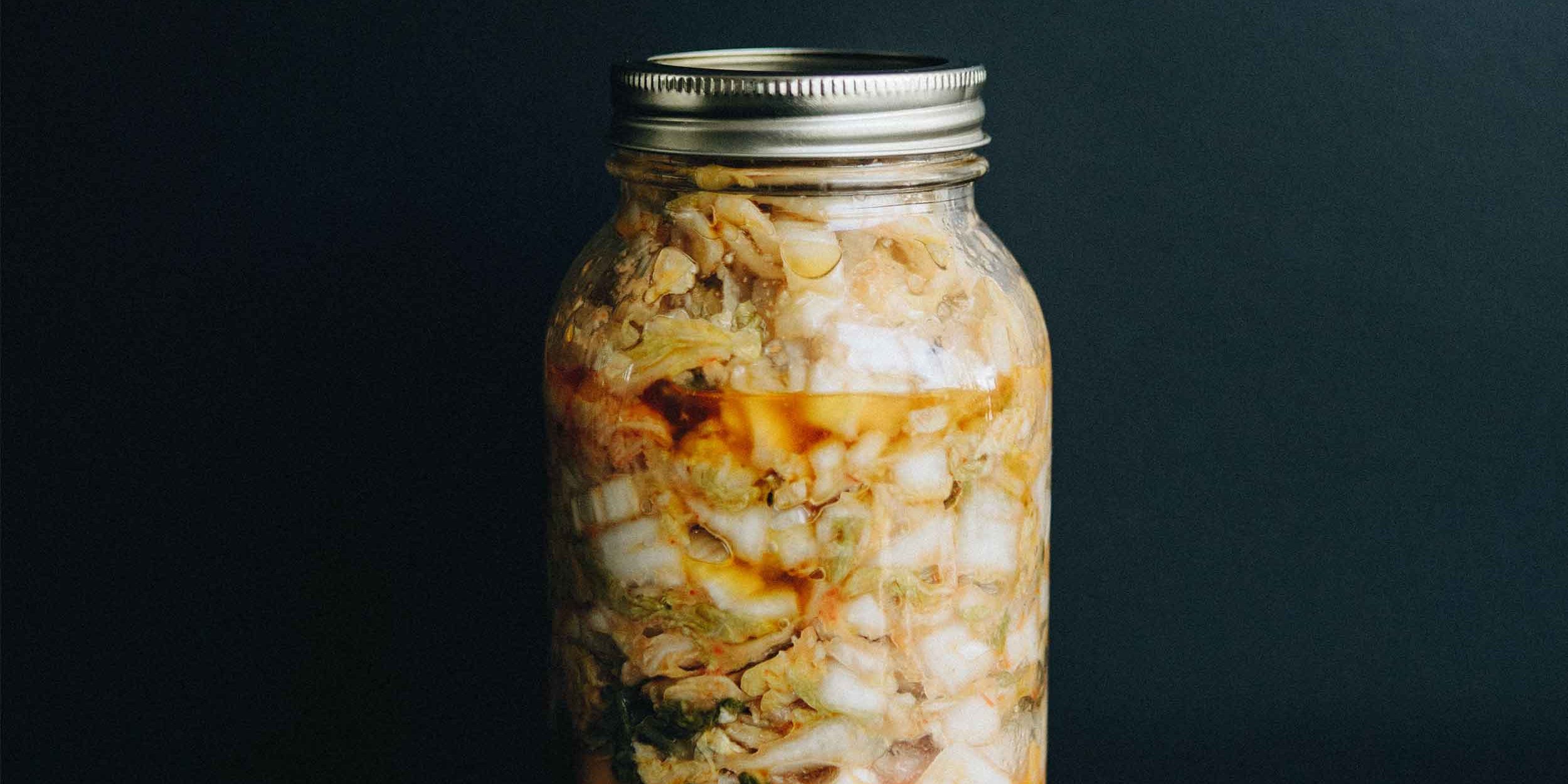LIVING FOODS — In an era of returning to slowness, people are gradually rediscovering the many benefits of an ancestral method of food preservation: fermentation. We had the pleasure of speaking with Isabelle Huot, a Doctor of Nutrition, so that she could shed some light on this culinary technique long reserved for living food enthusiasts.
To experiment with home fermentation, start with vegetables.
The basic principle is simple: just put whole, chopped or grated vegetables in an airtight jar, add salt and water, and then set aside for a few days or weeks at room temperature until the fermentation process has done its work.
What is a fermented food?
A fermented food is a food whose chemical structure has been modified by the activities of yeast (fungi) or bacteria. In other words, the bacteria feeds on sugars or proteins contained in the food to create acids, carbon dioxide or alcohol! After having undergone its transformation by bacteria, the food gains certain nutritional properties and develops new flavours and textures. You may discover entirely new flavour profiles!
What are the benefits of fermentation?
Although trendy, fermentation is nothing new: foodies and chefs have simply been having fun rediscovering and reinventing it. If we go back in time, the primary function of fermentation becomes obvious: conservation. Fermentation creates an acidic environment, which is conducive to the survival of good bacteria while preventing the development of harmful bacteria. In 2019, when we talk about conservation, we immediately think about food waste. Any new food preservation techniques are most welcome! However, the aspect that most interests me is the effect on human health. The consumption of fermented foods seems to benefit intestinal health and the immune system. Nevertheless, more research is needed to confirm these hypotheses. In any case, one thing is certain: fermentation maximizes the nutritional value of food and even increases the bioavailability (absorption potential) of certain nutrients. The predigestion of some components due to the activity of bacteria makes some of them more digestible. For example, in sourdough bread, part of the gluten has been digested by bacteria. For this reason, people who are sensitive to this protein sometimes find it easier to assimilate this kind of baked good.
Which foods can be fermented?
The beauty of it is that many foods can be fermented. In fact, any organic material can be fermented through the activities of bacteria. Dairy products, soy, fruits and vegetables, bread, wine, beer and even meat and fish can all undergo the fermentation process. In Quebec, we primarily find fermented dairy products (yogurt, kefir and cheese), vegetables (kimchi and sauerkraut) and soy (soy sauce, tempeh and miso). Sourdough bread, alcoholic beverages and kombucha are also favourites in Quebec.
Are there different types of fermentation and do they have different effects and benefits?
There are in fact different types of fermentation, depending on the microorganisms used. Regardless of the type of fermentation, the benefits are similar.
Here are the main types of fermentation:
- Yeasts produce alcoholic fermentation: They transform sugars into alcohol.
- Acetic acid bacteria produce acetogenic fermentation: They transform sugars into acetic acid.
- Lactic bacteria produce lactic acid fermentation: They transform sugars into lactic acid. This is the most popular type of fermentation.
How often and in what amount should we eat fermented foods?
The ideal is to eat some daily in small quantities. Since bacteria are alive, they have beneficial effects when consumed regularly. However, it’s difficult to determine the amount of bacteria in fermented foods (unlike probiotics). This variability in the products prevents precise recommendations.
What are the precautions that should be taken with fermented foods?
If fermentation is done correctly, the risk of food poisoning is relatively low due to the acidic environment in which the food is kept. However, if you want to do some fermentation at home, be sure to follow the rules of preparation. Excessively low acidity increases the risk of botulism, a severe poisoning due to bacteria.
Do you have any favourite fermented foods?
Of course! Personally, I love tempeh. In addition to being fermented, it’s an excellent source of vegetable protein. Kimchi, a delicious preparation of fermented vegetables from Korea, is also a personal favourite. It’s perfect for garnishing poke, salads and burgers.

Recipe for fermented vegetables
Vegetables are great for experimenting with home fermentation, and this basic recipe is perfect for starting to learn about the process.
STEP N°1
Fermentation must take place in an airtight jar with a rubber seal. Before starting, be sure to properly sterilize your receptacle and its lid with boiling water.
STEP N°2
Gather your ingredients: water, salt, carrots, napa cabbage and rutabaga.
STEP N°3
Carefully wash the vegetables and then shred them. Next, put them in the sterilized jar.
STEP N°4
Add salt to the water, mixing well: 1 litre (4 cups) of water requires 15 ml (1 tbsp.) of salt.
STEP N°5
Pour the brine over the vegetables so that they are completely covered. Be sure to leave a 2.5-cm (1-in.) space between the mixture and the lid.
STEP N°6
To put some pizazz into the mixture, add some aromatics (optional): fresh herbs, hot peppers, garlic, mustard seeds, etc. For example, kimchi is a fermentation of napa cabbage, garlic and hot peppers.
STEP N°7
Close the jar (do not use a sterilization method, as you would for canning). Store at room temperature (about 20 °C) for two to three weeks before eating.
STORAGE
As long as the jar isn’t opened, fermented vegetables can be stored up to a year at room temperature. After opening the jar, the mixture will keep for two weeks in the refrigerator. And don’t worry, if the fermentation is inadequate, and the vegetables are unfit for consumption, the jar will emit a very strong odour.





